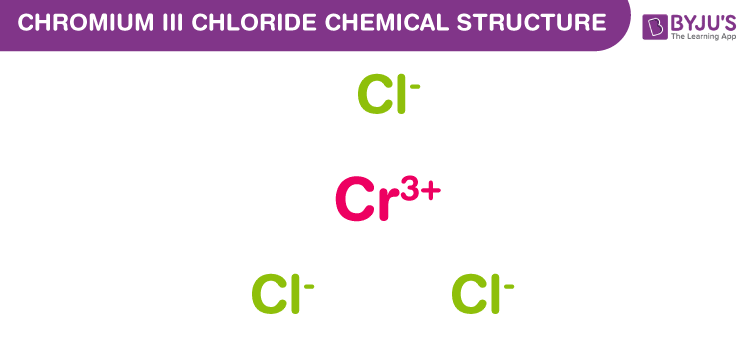

More specifically, chromium (III) oxide is used as a paint pigment, a fixative for certain textile dyes and as a catalyst.

Chromium (III) compounds are employed as pigment, as catalyst, as tanning agent in the tanning industry, in the production of pure chromium metal and chromium (VI) compounds, and in the production of refractory bricks. More applications are in the photographic industry (sensitiser), in industrial water treatment (including treatment of cooling tower water), as medicinal astringents and antiseptics, and in nuclear and high temperature research. protective coatings for automotive and equipment accessories), as dyes, as inorganic paint pigments, for leather tanning, as fungicides and wood preservatives, and as catalysts. Chromium compounds are used for chrome plating (e.g. They indicate that in the pH range of most natural waters, 6 to 9, U(VI) will be associated to aqueous phosphate complexes when the total concentration ratio ]]T/CO]T is greater than 101].Chromium metal is used as an alloying element to harden steel and to manufacture stainless steel. The effect of phosphate on the mobility of U in natural waters is assessed in the light of these new data. A discussion of the hydrolysis of U(VI) is also reported. From the same experiments we have established the equilibrium constant of the hydroxide complex UO(OH)].

Their formation constants as well as the solubility constant of (UO)(PO)4HO(s) have been determined. Analysis of these data indicates the formation of the predominant species more » UOHPO(aq) and UOPO in the pH range 4-9. We have investigated the solubility of a well-characterized U(VI)-phoshpate phase in the pH range 3 to 9: (UO)(PO)4HO(s). Hence, the effect of phosphate on the migration of uranium in natural waters is not well understood. Phosphate is present in most of these systems however, the thermodynamics of the U(VI)-HPO system are poorly known, particularly in the pH range of interest 6 to 9. Uranium is commonly associated in natural waters with O-containing ligands both in the aqueous and the solid phases. Reliable values for the Bi(OH)3(am) solubility reactions involving Bi(OH) 3(aq) and Bi(OH) - 4 and the formation constants of these aqueous species are also reported. Steady state concentrations and equilibrium were reached in 9.0, Bi(OH) 3(am) is the solubility controlling phase. HCl or NaOH were used to obtain a range in pH values. The solubility of BiPO 4(cr) was studied at 23 ± 2 ☌ from both the over- and under-saturation directions as functions of a wide range in time (6–309 days), pH values (0–15), and phosphate concentrations (reaching as high as 1.0 mol Prior to this study no data for the solubility product of BiPO 4(cr) or the complexation constants of Bi with phosphate were available. No other data on any Cr(III)-carbonato complexes are available for comparisons. (PNNL), Richland, WA (United States) Sponsoring Org.: USDOE OSTI Identifier: 15020719 Report Number(s): PNNL-SA-40904 KP1302000 TRN: US0504692 DOE Contract Number: AC05-76RL01830 Resource Type: Journal Article Journal Name: Journal of Solution Chemistry, 33(10):1213-1242 Additional Journal Information: Journal Volume: 33 Journal Issue: 10 Country of Publication: United States Language: English Subject: 12 MANAGEMENT OF RADIOACTIVE WASTES, AND NON-RADIOACTIVE WASTES FROM NUCLEAR FACILITIES CHEMICAL COMPOSITION CHROMIUM HIGH-LEVEL RADIOACTIVE WASTES HYDROXIDES PHOSPHATES RAMAN SPECTROSCOPY SOLUBILITY TANKS THERMODYNAMIC MODEL THERMODYNAMICS X-RAY DIFFRACTION Thermodynamics Cr(OH)3(am) solubility hydrolysis constants ion-interaction parameters Cr(III)-phosphate complexes Cr(OH)3H2PO4- Cr(OH)3(H2PO4)22- = 0.19), respectively. Authors: Rai, Dhanpat Moore, Dean A Hess, Nancy J Rao, Linfeng Clark, Sue B Publication Date: Research Org.: Pacific Northwest National Lab.


 0 kommentar(er)
0 kommentar(er)
